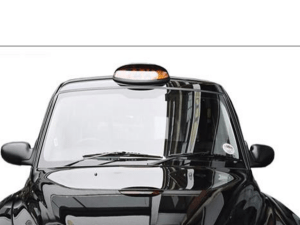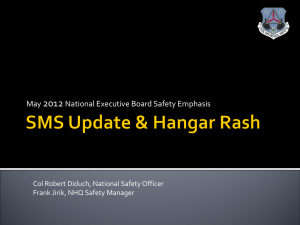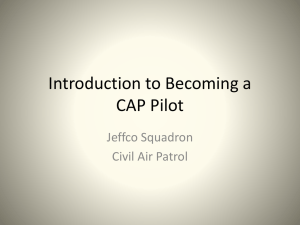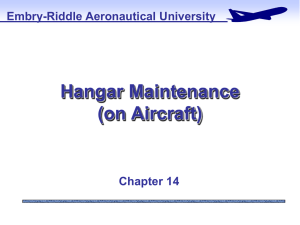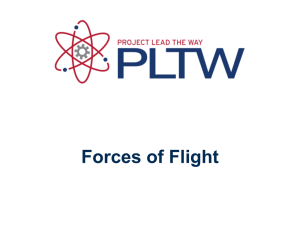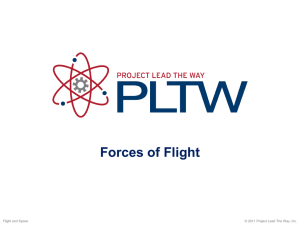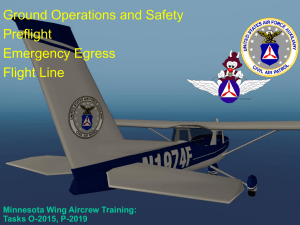September 8, 2012
advertisement
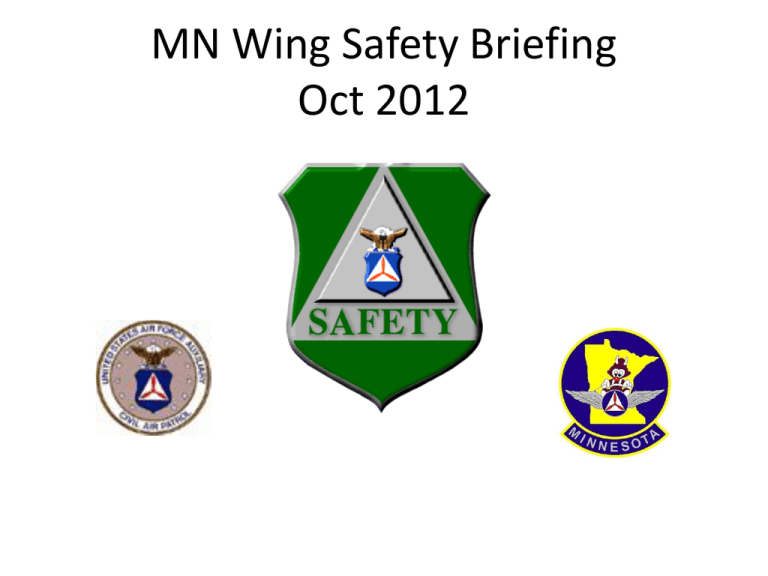
MN Wing Safety Briefing Oct 2012 Overview • • • • Safety Survey DOV Safety Brief Halloween Wing Mishap Time for units to complete their Annual Safety Survey • “Safety Surveys. Each unit shall complete the online Safety Survey available to safety officers and commanders as an eServices application between 1 October and 31 January for the preceding fiscal year. …” • Ref CAPR 62-1 Paragraph 6.c Minnesota Wing Safety Day Briefing July 2012 LtCol Greg Nastrom Minnesota Wing/ DOV On July 3rd the national commander of CAP wrote: • • • • • • • • • • • SUBJECT: Hangar Rash and Taxi Mishaps 1. In the past 60 days, Civil Air Patrol has experienced five hangar rash and two taxi mishaps. All seven were the result of improper actions by the aircrew. This is poor stewardship of taxpayers’ dollars. In light of the massive funding cuts being experienced throughout the government, this is a totally unacceptable perception for Civil Air Patrol. 2. My “Conversation with the National Commander” initiative is an attempt to stem the tide of this type of mishap. However, I feel that we need to do more. 3. Effective immediately region and wing commanders will suspend the flight privileges of all pilots and aircrew involved in hangar rash or taxi mishaps resulting from improper actions, in accordance with CAPR 60-1, paragraph 2-7a. Those involved in this type of mishap will be subject to the following: a. First incident – immediate suspension of flight privileges for 90 days b. Second incident – immediate suspension of flight privileges for 180 days c. Third incident – permanent revocation of CAP flight privileges (pilot or aircrew) 4. Reinstatement of flight privileges and/or appeal of flight privilege suspensions will be in accordance with CAPR 60-1, paragraph 2-7. 5. I am counting on you to impress upon the members within your regions and wings of the importance of taking ownership of our aircraft and creating an environment that fosters safety in aircraft operations. CHARLES L. CARR, JR. Major General, CAP How do we go about “taking ownership of our aircraft and creating an environment that fosters safety in aircraft operations” with respect to Hangar Rash and Taxi Mishaps? Regarding taxi procedures: CAPR 60-1 says this: • 2-2 i. When taxiing within 10 feet of any obstacle, pilots shall proceed at a pace not to exceed a slow walk until clear. During taxi maintain at least 50 feet behind light single-engine aircraft, 100 feet behind light multiengine or light jet aircraft and 500 feet behind helicopters or heavy multiengine or heavy jet aircraft. –How far is ten feet? Less than a wing length –How fast is a slow walk? 2 mph = 3 feet per second = 10 feet per 3 seconds ( a thousand one, a thousand two…) Pretty slow! Some taxi tips from Airplane Flying Handbook (FAA-H-8083-3): When taxiing, the pilot’s eyes should be looking outside the airplane, to the sides, as well as to the front. [No setting up the GPS during taxi!] If at any time there is doubt about the clearance from an object, the pilot should stop the airplane and have someone check the clearance. It may be necessary to have the airplane towed or physically moved by a ground crew. [Watch the shadows on the ground – when parking next to another high-wing airplane, if the shadows are coming together then the wings are too. Stop and park the airplane with a tow bar.] Normally, the speed should be at the rate where movement of the airplane is dependent on the throttle. [The C-182 POH says “When taxiing, it is important that speed and use of brakes be held to a minimum”; also Hold back on the yoke during taxi to relieve weight on the nose gear] (Use proper cross/tail wind technique.) When yellow taxiway centerline stripes are provided, they should be observed [Seems self-evident] When taxiing, it is best to slow down before attempting a turn. [Doh!] The C-172 POH says “The carburetor heat control knob should be pushed full in during all ground operations unless heat is absolutely necessary” What about hangar rash? Not the kind you get from putting your tee shirt on a rusty wire, we mean the other kind…involving airplanes Preventing Hangar rash • An excellent self-briefing is on the Wing Intranet site, under Operations, under Flight Safety Briefing Materials, called “Hangar Guide Lines”, and shown on the next slide. • The link to this pdf is https://www.mncap.org/online/do/docs/do_ha ngar_guide_lines.pdf Another aid to preventing hangar rash is to have a helper when moving aircraft Other items demand our attention In MN Wing we have some problems with our flying procedures, today we’ll discuss: a. Scheduled maintenance (especially 100hour inspections) b. Oil (the right amount, the right kind) c. Tires (inflated) d. Leaning during taxi e. Washing (get the bugs off!) Each of these items is covered on the Normal Checklist Click mouse button to advance screen Revisit some items: We cannot overfly the 100-hour inspection due to ADs for all a/c Click mouse button to advance screen All Aircraft in the Minnesota Wing fleet have 100-hour AD requirements, no waivers Gippsland GA-8 (1) Cessna 172 (12) Cessna 182 (4) Gliders – several The inspections are listed on the front cover of the AIF (white book) Tach times Continue the checklist: oil OIL: For both the C172 and C182 it’s 6 quarts MIN. Use ONLY the weight and brand of oil on the placard: for example 100W PLUS Aeroshell for C182 or 15W50 Aeroshell for C172 Click mouse button to advance screen Continue the checklist: Click mouse button to advance screen For the C-182s in summer it looks like this: Don’t use any other oil! If the placard on the cowl door is missing, you can look at the AIF Continue the checklist: tire Tire Inflations: If there’s a belly, it’s low. If in doubt, use a gauge. Click mouse button to advance screen Placards are on the gear struts There should be no “belly” on any tire; if in doubt, use a gauge If the inflation placard on the strut is missing, you can look at the AIF Revist more items: Leaning for ground operations: You don’t see it on this checklist for taxi: it is not included on the C-172 checklist for the sake of inexperienced pilots; experienced pilots SHOULD always lean for taxi. For C-182s, leaning for ground operations MUST be done soon after startup and during taxi. Leaning after landing is included on both C-172 and C-182 checklists Click mouse button to advance screen Lean aggressively so if you forget to enrich before takeoff the engine will let you know Wash the bugs off after flying Bugs Summary • If we treat the airplanes like our own the incidence of taxi and hangar mishaps will be minimized • If we use the checklist faithfully and thoroughly the incidence of maintenance issues will be minimized Fly Safe! Halloween Safety • Costumes • Trick or Treating • Parties Costume safety • Costumes should flame retardant. • Make costumes visible with reflector strips, a flash light or light stick . • Eliminate tripping hazards such as high heel shoes or long dangling costume. • Make sure props such as a scythe or sword are soft. • Ensure that masks do not block vision. Trick or Treat • Children should always go out Trick or Treating accompanied by a responsible adult. (Stay together as a group if going out to Trick or Treat without an adult.) • Stick to the curfew times and known subdivisions. Set a time for their return home. • Plan a safe route so parents know where their older kids will be at all times. • Make sure that kids have a cell phone. • Do not to eat any treats until they bring them home to be examined by you. • Never go into the home of a stranger or get into their car. Party Safety • If using dry ice in a punch bowl, place the ice in a larger bowl outside of the punch bowl. • Move any breakable pieces of furniture or knick-knacks • Consider lighting your Jack O' Lanterns with battery powered candles • Consider food allergies • Don’t allow guests to drink and drive • Many decorations may be flammable MN Wing Mishaps • September 8, 2012- Cadet hyperventilation. No cause found. Stay Safe through Attention to Detail…


